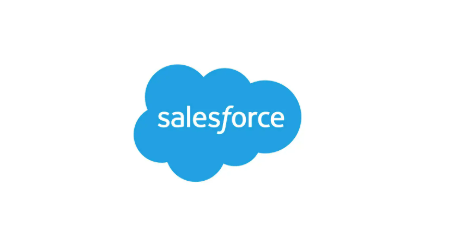Does Salesforce Marketing Cloud Work on Inbound Emails?

Email remains the backbone of digital marketing despite the proliferation of newer communication channels. For many businesses using Salesforce Marketing Cloud (SFMC), understanding its capabilities for handling inbound emails becomes crucial for developing comprehensive communication strategies. While SFMC excels at outbound email campaigns, its approach to inbound email management presents a more nuanced picture that marketers should thoroughly understand.
Understanding Salesforce Marketing Cloud’s Email Functionality
Salesforce Marketing Cloud originated primarily as an outbound marketing automation platform. Its core strength lies in creating, segmenting, personalizing, and delivering email campaigns to targeted audiences. The platform’s Journey Builder, Content Builder, and Automation Studio components work together seamlessly to orchestrate sophisticated outbound email sequences based on customer behavior, preferences, and demographics.
However, when it comes to inbound email processing—handling replies and messages initiated by recipients—SFMC’s native capabilities follow a different philosophy than some might expect. This distinction matters significantly for businesses developing comprehensive email communication strategies that must address both outbound messaging and inbound responses.
Native Inbound Email Handling in SFMC
Salesforce Marketing Cloud does provide certain functionalities for managing inbound emails, though these capabilities differ from full-fledged inbound email processing systems. The Reply Mail Management (RMM) feature represents SFMC’s primary tool for handling responses to outbound campaigns. This system allows basic processing of replies through several mechanisms:
RMM can automatically process unsubscribe requests, forwarding relevant information to subscriber management systems to update preference records. This automation helps maintain compliance with email regulations while reducing manual processing requirements.
The system can also identify and categorize certain types of responses, such as out-of-office replies, allowing these messages to be filtered appropriately rather than cluttering marketing or service queues. This categorization proves particularly valuable for distinguishing between automated responses and genuine customer communications requiring attention.
For more complex scenarios, RMM can forward selected inbound messages to designated email addresses or support queues where human representatives can address specific inquiries or requests. This routing capability helps ensure relevant messages reach appropriate handlers rather than disappearing into unmonitored mailboxes.
According to Email Vendor Selection, proper reply management represents an often-overlooked aspect of email marketing that significantly impacts customer experience. Their research indicates that up to 12% of marketing email recipients attempt to directly reply to campaigns, making proper handling of these responses crucial for maintaining positive brand relationships.
Limitations of SFMC for Comprehensive Inbound Email Processing
Despite these capabilities, SFMC’s native inbound email processing falls short of what many organizations might consider comprehensive inbound email management. Several limitations deserve consideration when developing email communication strategies:
The platform lacks sophisticated natural language processing for automatically interpreting the content and intent of inbound messages. While basic categorization occurs, nuanced understanding of customer inquiries requires either integration with additional systems or human intervention.
SFMC also provides limited native capabilities for automatically generating personalized responses to common inquiries received through inbound channels. Organizations seeking this functionality typically need to implement additional solutions or develop custom applications leveraging the Salesforce platform’s broader capabilities.
Furthermore, tracking conversations across multiple reply cycles presents challenges within the standard SFMC environment. The system excels at managing outbound campaign metrics but offers less robust tools for monitoring ongoing email discussions initiated through replies.
Integration Options for Enhanced Inbound Email Management
Recognizing these limitations, many organizations implement integrated approaches that combine SFMC’s strengths with complementary systems designed specifically for inbound communication management. Several integration patterns have emerged as common practice:
Connecting SFMC with Salesforce Service Cloud creates a powerful combination that leverages each platform’s strengths. Marketing Cloud manages outbound campaigns while Service Cloud handles inbound responses through case management workflows. This integration allows marketing teams to focus on campaign optimization while ensuring customer inquiries receive appropriate attention from service representatives.
For organizations already using Salesforce Sales Cloud, configuring email-to-case or email-to-lead functionality provides mechanisms for routing inbound emails to appropriate sales processes. This approach helps ensure inquiries generating sales opportunities receive prompt follow-up rather than languishing in marketing response queues.
Some enterprises implement dedicated email management solutions like Front that specialize in collaborative inbox management and integrate these with SFMC through API connections or middleware platforms. This approach provides purpose-built tools for handling inbound communications while maintaining synchronization with marketing automation processes.
Building a Comprehensive Email Communication Strategy
Given SFMC’s orientation toward outbound marketing, organizations should develop thoughtful strategies for handling the full communication lifecycle including both outbound campaigns and inbound responses. Several considerations warrant attention when designing these approaches:
Clearly defining which communications channels serve which purposes helps set appropriate expectations and allocate resources effectively. Many successful organizations explicitly inform customers about preferred channels for different types of inquiries rather than assuming all email addresses serve identical purposes.
Implementing consistent governance processes across both marketing and service communications ensures brand voice remains coherent regardless of which team handles specific interactions. This consistency proves particularly important when customers may interact with both marketing emails and service responses during the same customer journey.
Developing appropriate metrics that span both outbound and inbound communications provides more comprehensive insights than evaluating each channel independently. For instance, examining how inbound response rates correlate with specific outbound campaign characteristics may reveal opportunities for improving both components simultaneously.
For organizations seeking to enhance their integrated email communication strategy, our team at outboundmarketo.com offers specialized consulting services focused on optimizing the connection between outbound campaigns and inbound response handling.
Alternative Approaches for Managing Marketing-Related Inbound Emails
Some organizations find that alternative architectures better suit their specific requirements for handling marketing-related inbound communications. Several patterns have emerged as viable alternatives to relying solely on SFMC’s native capabilities:
Implementing dedicated “response handling” journeys within Journey Builder allows certain types of replies to trigger specific follow-up sequences. This approach works particularly well for straightforward scenarios like information requests that can be fulfilled through automated responses.
For organizations with modest inbound volumes, creating manual processes for regularly reviewing and responding to messages captured by RMM may prove sufficient without requiring additional technology investments. This approach works best when inbound response volumes remain manageable for available staff resources.
Larger enterprises sometimes implement dedicated email response teams that focus exclusively on managing replies to marketing communications, operating alongside but separately from traditional customer service functions. This specialization allows for developing expertise specifically relevant to marketing-originated conversations.
Future Directions for SFMC Inbound Capabilities
Salesforce continuously evolves its platforms, and several recent developments suggest potential enhancements to SFMC’s inbound email capabilities. The increasing integration between Marketing Cloud and other Salesforce platforms points toward more seamless handling of cross-channel communications in future releases.
Additionally, Salesforce’s investments in artificial intelligence through its Einstein platform may eventually enhance automatic classification and routing of inbound messages. While current implementations focus primarily on outbound optimization, the underlying technologies could potentially address inbound processing challenges in future iterations.
Conclusion
Salesforce Marketing Cloud provides robust capabilities for outbound email marketing while offering more limited native functionality for comprehensive inbound email processing. Understanding these strengths and limitations helps organizations develop appropriate strategies for managing complete communication lifecycles rather than focusing exclusively on outbound campaigns.
Most successful implementations combine SFMC’s powerful outbound capabilities with complementary systems specifically designed for handling inbound communications. This integrated approach leverages each platform’s strengths while providing customers with seamless experiences regardless of whether they’re receiving marketing messages or sending inquiries.
Rather than viewing this situation as a deficiency, forward-thinking marketers recognize the differentiated requirements of outbound and inbound communications and implement appropriate specialized tools for each purpose. This recognition leads to more effective overall communication strategies that benefit both marketing performance and customer experience.







